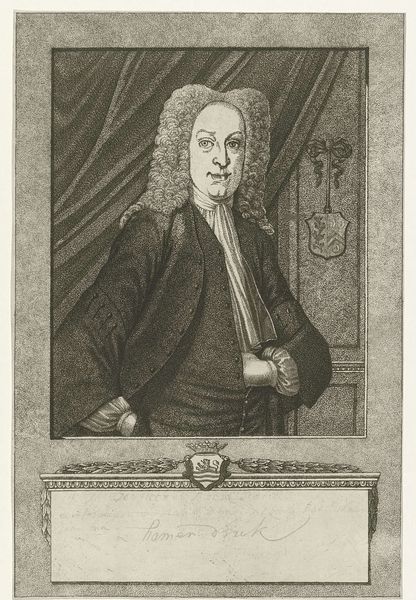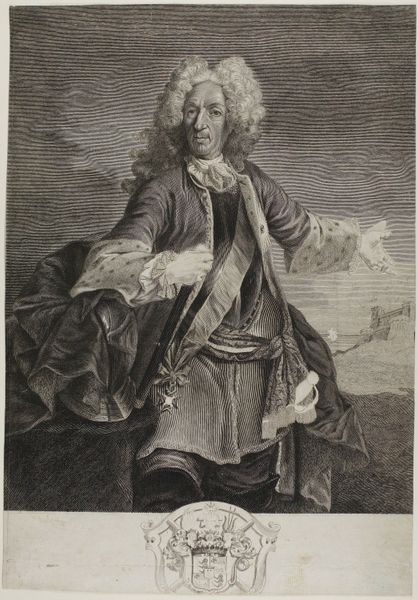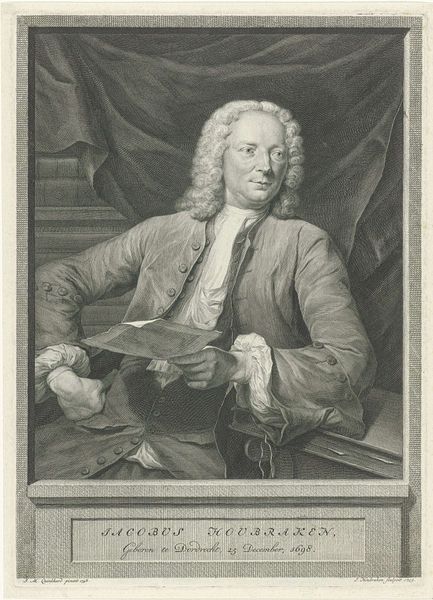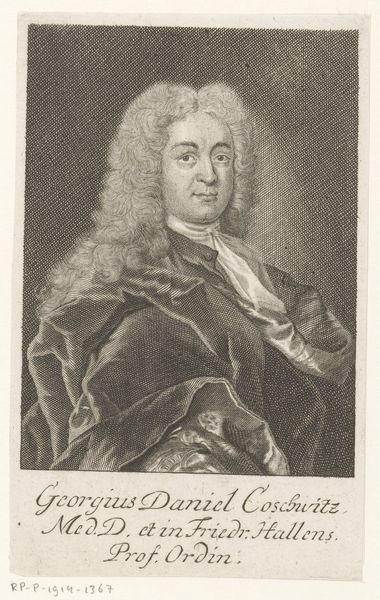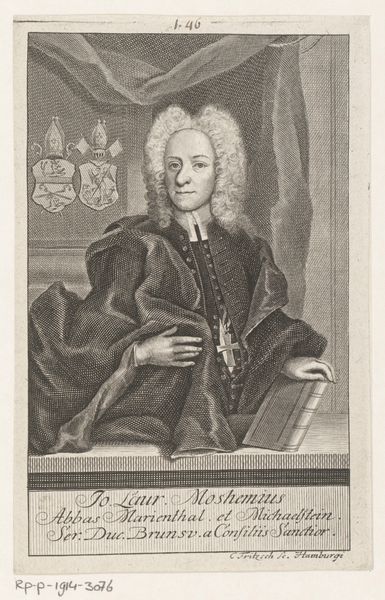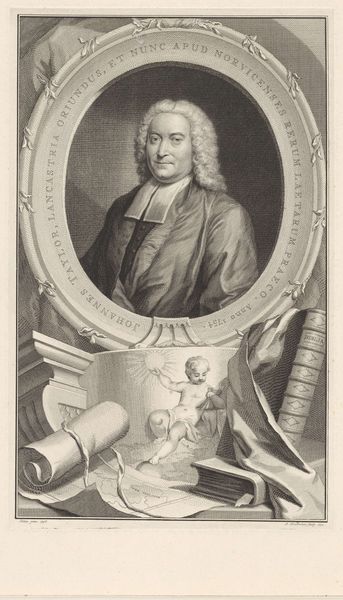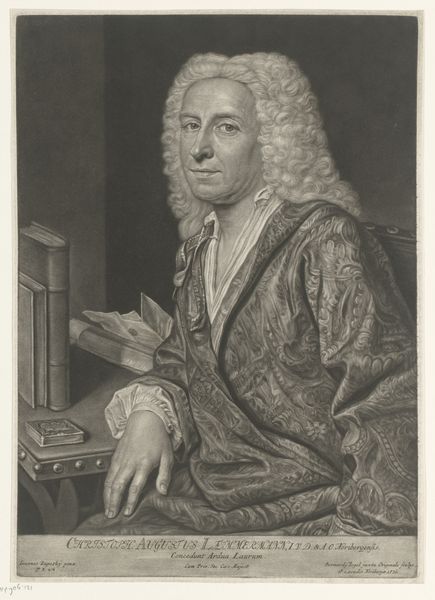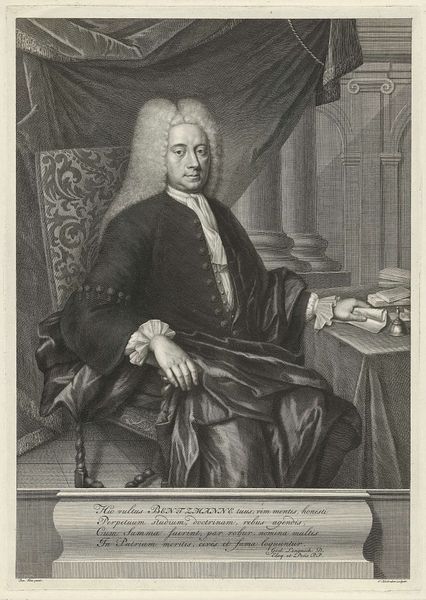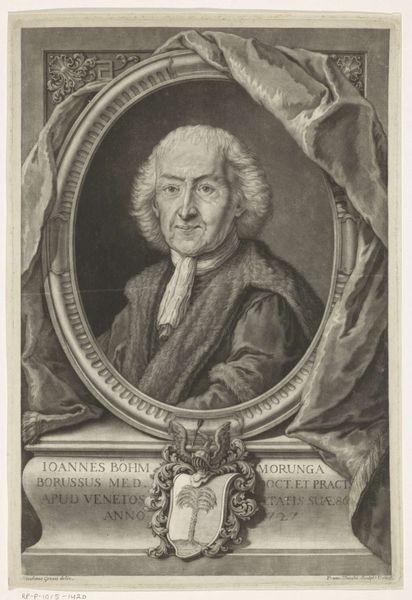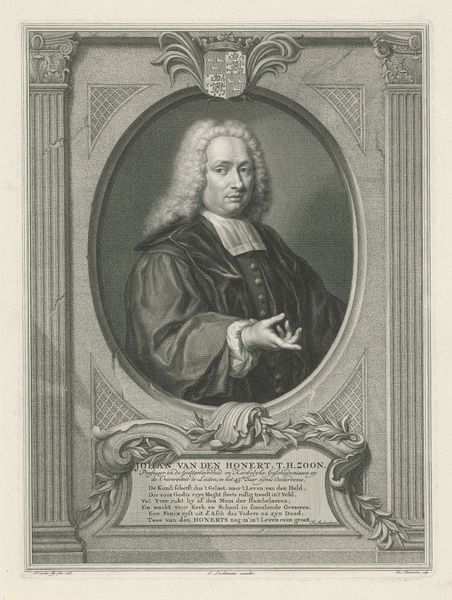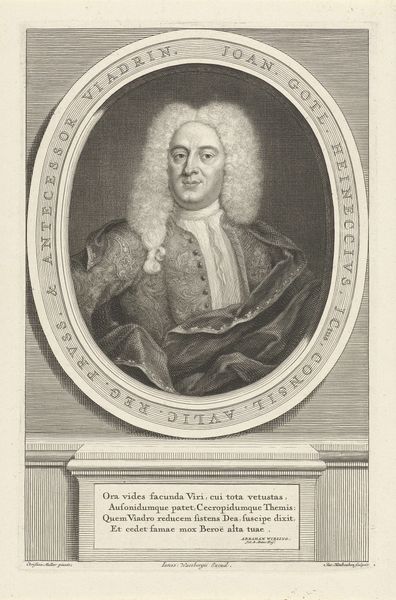
engraving
#
portrait
#
baroque
#
old engraving style
#
history-painting
#
engraving
Dimensions: height 181 mm, width 107 mm
Copyright: Rijks Museum: Open Domain
Curator: This is a remarkable engraving dating from between 1742 and 1759, a portrait of Karl Friedrich Drollinger by Georg Daniel Heumann. Editor: Immediately, the density of line work gives the impression of controlled intensity, like a meticulously crafted legal document. The light seems to highlight the face as an embodiment of reason and status. Curator: Observe the composition. Drollinger is centrally placed, a sturdy architectural figure framed by a heavy drape and what appears to be a bookcase. The composition emphasizes balance, reinforced by the meticulous hatching that models form with remarkable subtlety. Semiotically, the textures create a striking binary. Editor: Indeed, the setting tells a tale of social and intellectual stature, where books and documents form an essential foundation of identity. It begs the question of who has historically had the privilege to curate and write these texts, and how that affected power dynamics of the era. The details in Drollinger's clothing subtly mark his presence within an elite hierarchy, doesn't it? Curator: Precisely! Note how the lines of the engraving mimic and celebrate this layering of societal expectation; see how the formal cascading wig mimics the fall of the draped fabric in the background. Drollinger's confident gaze meets the viewer head-on, imbuing him with authority and intellect. This isn't merely a representation of physical likeness; it's an elevation to almost iconic status through artistic rendering. Editor: The portrait exudes confidence, yes, but to my modern eye, this aestheticized elevation feels laden with the responsibility to challenge the norms of that societal hierarchy—a potential for progressive action I’d like to project onto this historical moment. However, in order to know this, we need to understand what historical position he had and the historical environment he was subjected to. The very tools of this portrait speak to established societal powers and norms, so without historical research the figure almost reads as an emblem of oppressive power. Curator: That's quite a fascinating observation; your social awareness enables an engagement that reaches beyond a study of pure form, however—viewed closely, Heumann's crosshatching creates remarkable optical richness in representing subtle shifts in the textile or light across the surfaces. Editor: These artistic decisions—to invoke societal hierarchy and project a sense of power—offer us a great place to investigate the cultural priorities that might, from our contemporary vantage point, be both worth honoring or challenging in order to forge a path toward social change.
Comments
No comments
Be the first to comment and join the conversation on the ultimate creative platform.

